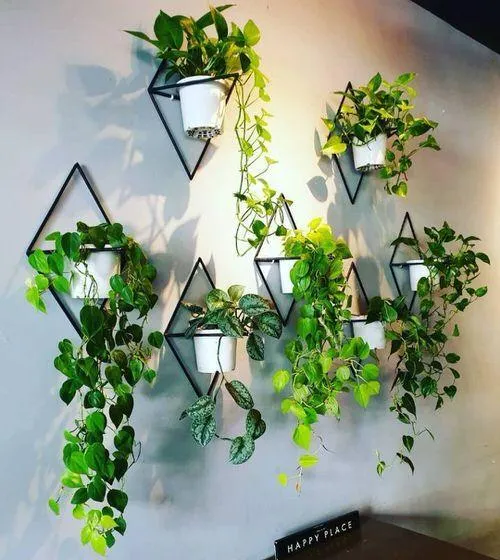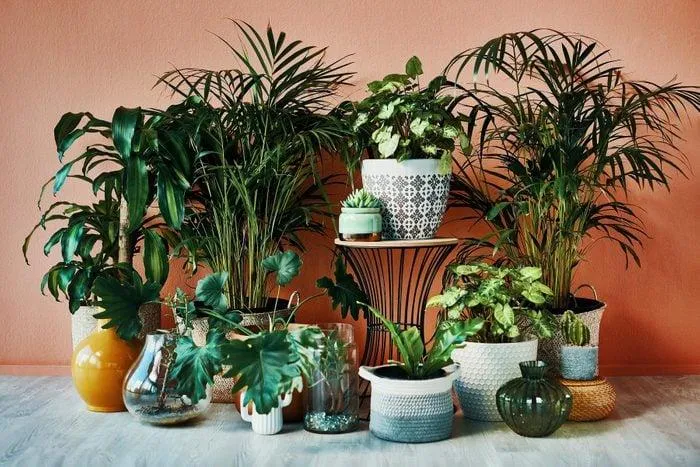A Complete Guide to Growing Plants on Walls Indoors
If you’re looking for new ways to beautify your home without taking up valuable floor space, growing plants on walls indoors is a fantastic option. From my experience, vertical gardening allows you to really maximize your plant collection even in small living areas. In this article, I’ll cover everything you need to know to get started with wall-mounted indoor plant displays.
Choosing the Right Plants
- Succulents and cacti: These drought-tolerant plants are perfect for walls since they don’t require a lot of water. Some top options include echeveria, haworthia, and aloe vera.
- Herbs: Basil, thyme, oregano, and mint grow well mounted on walls and are handy to have in the kitchen. Just be sure to pick a spot with enough light.
- Ferns: Varieties like button fern and bird’s nest fern thrive in humid indoor conditions. Mount them near the bathroom for extra moisture.
- Spider plants: These trailing plants will cascade down your wall beautifully. Spider plants also purify the air, making them a great choice.
- Pothos: Known for being nearly impossible to kill, pothos comes in various color varieties like marble queen and neon. It’s an excellent low-maintenance choice.
The key is picking plants adapted to indoor conditions that won’t outgrow the space. Stick to varieties labeled “low light” or “indirect light.” Avoid anything too heavy that could pull down mounting hardware over time.
Choosing a Planting Method
There are a few different strategies for growing plants on walls:
- Hanging planters: These come in all shapes and sizes to suit various wall spaces. Make sure to use a sturdy material like plastic or treated wood that can support the weight when watered.
- Wall partitions: Dividers with built-in planters allow you to maximize vertical space and grow several plants together. Look for slimline designs if space is tight.
- Picture ledge planters: Replacing a wall hanging with a planter shelf creates a stunning botanical display. Mount them at eye level for best viewing.
- Mounted pots: Secure pots directly to the wall using strong adhesive strips, screws, or hooks. This is the most budget-friendly approach.
Don’t forget to incorporate drainage holes so excess water doesn’t damage walls or coatings. Proper drainage is crucial to keeping wall plants healthy.
Finding the Right Spot
Location is important to ensure your wall garden thrives. Here are some tips when selecting a planting area:

- Light is key – go for east, west, or south-facing windows where plants will receive at least six hours of indirect sunlight per day.
- Avoid direct afternoon sun if using heat-loving succulents and cacti, as intense rays could scorch leaves.
- Factor in the height – mount hanging planters and wall pots within reach for easy care.
- Consider traffic flow – avoid placing heavy planters directly above walkways or thoroughfares.
- Maximize decorative impact – mount displays at eye level along open wall spaces for visual interest.
Much like choosing low-light tolerant varieties, selecting the proper microclimate indoors sets your wall garden up for success.
Caring for Wall Plants
With some regular TLC, your wall garden will thrive for years to come. Here are the basics:
Watering: Check soil moisture 1-2 inches deep with your finger and water thoroughly when dry. Some signs of thirst include drooping or wrinkled leaves. Succulents and cacti only need water every few weeks.
Fertilizing: Use a dilute liquid houseplant food each month April through September per label instructions. Too much can also harm plants.
Pruning: Trim any damage or dead growth to keep plants looking neat. Some trailing varieties like pothos and ivy appreciate an occasional trim to maintain their shape.

Pest control: Check regularly for signs of pests and isolate any affected plants right away. A spray of neem or insecticidal soap usually does the trick for common issues like spider mites or aphids.
Rotate hanging planters: Twisting planters within their mounts every few months ensures even growth without lopsided shapes from light exposure.
With basic care like watering, feeding, and pest checks on a weekly schedule, you’ll be enjoying your wall garden for seasons to come! Let me know if you have any other indoor plant questions.
In summary, growing plants on walls allows you to transform unused vertical spaces into lush botanical displays. With smart plant selection, mounting techniques, and ongoing care, your wall garden will be a stunning indoor focal point for many years to come. With walls of greenery freshening the air, who needs more floor space? It’s a fun and easy way to enjoy gardening inside all year round.
Factors to Consider for Growing Plants on Walls Indoors
| Plant Type | Light Needs | Watering Needs | Good For Walls? |
|---|---|---|---|
| Pothos | Low | Let soil dry out between waterings | Yes, vine grows well hanging |
| English Ivy | Medium | Water when top inch of soil is dry | Yes, trails well on walls |
| Philodendron | Low-Medium | Water when top inch of soil is dry | Yes, vine grows well hanging |
| Peperomia | Medium-High | Water when top inch of soil is dry | Maybe, depends on variety |
| Succulents | High | Water sparingly, when soil is completely dry | Yes, can adhere directly to walls |
FAQ
-
What kinds of plants can I grow on walls inside?
There are basically lots of choices for indoor wall plants. Some good options are ivy, pothos, philodendron, Swedish ivy. These kinds sort of cling to surfaces well with their vines. You could also try spider plants or succulents.

-
How do I get plants to attach to a wall?
To produce wall plants you’ll need some kind of support for them to grip onto. The most common choices appear to be trellises, stakes, poles or wires. You simply attach these to the wall and let the plants’ vines grow up clinging to them. At the same time, be sure to secure pots so they don’t accidentally come loose!
-
Will plants damage the wall surface over time?
It’s possible plants may kind of stain or leave marks on some surfaces in the long run. However, if you use a trellis, poles or stakes to train the plants up rather than letting them touch the wall directly, it seems less likely to cause damage. Maybe put up a barrier like contact paper or old towel as extra protection too.
-
What is the best way to water wall plants?
Careful watering is key with wall planting. Water too much and it could really mess up the decor! A good method appears to be using a watering can with a narrow spout. Try to only wet the soil and avoid getting other surfaces soaked. Strong winds also dry walls faster, so wall plants in those spots may need watering more regularly. Any other watering tips, readers?
-
Can wall plants improve indoor air quality?
Some studies show that certain plants are truly great for filtering out toxins in the air. Ivy, english ivy and pothos are reported to be among the best at absorbing chemicals like formaldehyde, benzene and trichloroethylene. If you got these hanging or crawling on your walls, it’s possible they could make the air in your home a bit cleaner to breathe. Cool, huh? Assuming they don’t damage the walls, of course!
-
What are some potential issues with wall planting?
Besides possible wall damage mentioned earlier, wall plants may also attract more pests indoors compared to tables. Spider mites and scale insects love hiding out on undisturbed surfaces. You’ll have to do a better job inspecting plants and treating any infestations. High foot traffic areas also risk trampling or knocking over wall planters by accident. Protect plants in busy spots!

-
Should walls be decorated with real plants or artificial?
Both real and fake wall plants each have merits. Living plants may offer some nice benefits we discussed. However, artificial ones avoid issues like watering, pests and potential wall damage. They also never need replacing if they croak! But is the liveliness of real greenery worth a bit more work?
